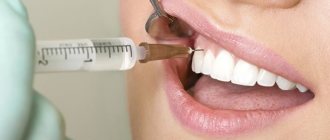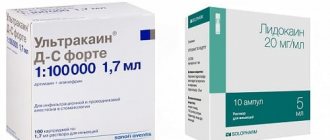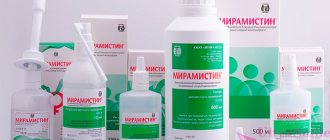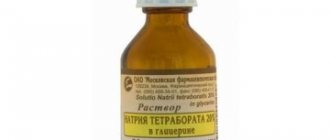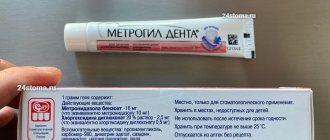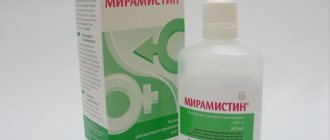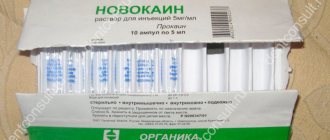The choice of anesthetic in dental treatment
The middle and older generations of our country remember very well the times when the need to seek help from a dentist for the prevention and treatment of teeth was associated with the unpleasant feeling of severe and difficult-to-bear pain awaiting the future patient, and therefore a visit to the doctor was made only in cases of the most extreme and urgent need. Modern dentistry, unlike the level of dentistry of the 80-90s of the last century, is much better armed. The most popular anesthetic in dentistry of the past, novocaine, is irretrievably becoming a thing of the past and has been replaced by new drugs that are less toxic and more effective.
When choosing an anesthetic, important indicators are:
- effectiveness of pain relief
- good tissue permeability and long-lasting analgesic effect of the drug
- minimal toxicity and safety of the drug
Since almost all modern drugs are quite effective, the most important point when choosing an anesthetic is its safety.
No less important when choosing an anesthetic is its relationship to the vasoconstrictor (a drug that narrows blood vessels, which leads to a decrease in blood flow in them and prolongs the effect of the drug) - adrenaline. For many patients with pathologies of the cardiovascular system, with endocrine pathologies, patients with bronchial asthma and other diseases, vasoconstrictor-adrenaline is contraindicated. In addition, adrenaline itself maintains a high level of stress, which is undesirable during treatment.
The most popular and corresponding to the above requirements are the following anesthetics:
- Ultracaine DS forte
- Ultracain DS
- Scandonest SVC
Ultracaine DS forte and Ultracaine DS The main anesthetic substance for these drugs is Articaine, which is 2 times more effective than lidocaine and 6 times more effective than novocaine. The drug is completely excreted from the body and is non-toxic, since it does not contain parabens (anesthetic preservatives), there is practically no allergic reaction to the substance and, according to clinical studies, the drug is safe in 99.4% of cases. The main advantages of the drug are:
- high efficiency of the drug with a low degree of toxicity
- almost instantaneous effect of the drug (from 30 seconds)
- safety of the drug for pregnant and nursing mothers, as well as for preschool children
- The duration of anesthesia depends on the anesthesia technique used by the doctor (from 1.5-2 hours when treating one tooth and up to 5-6 hours for more complex dental treatment methods).
Teeth to which standard therapy is applicable are best anesthetized with Ultracaine DS with a minimal content of adrenaline. The effectiveness of the drug is quite sufficient for a fairly long operation, and only in difficult cases is it recommended to use Ultracain DS Forte with a higher concentration of the vasoconstrictor.
Scandonest SVC This drug is recommended for patients for whom the vasoconstrictor-adrenaline is strictly contraindicated (patients with pathologies of the cardiovascular system, etc.) since it itself has a vasoconstrictor effect and therefore can be used without adrenaline.
Ultracaine during pregnancy and breastfeeding
The optimal form of this anesthetic during pregnancy is Ultracaine DS with an epinephrine concentration of 1:200,000. The use of anesthetics without epinephrine (or adrenaline) in pregnant and lactating women is generally not recommended. This is due to the fact that adrenaline, by constricting blood vessels at the injection site, slows down the absorption of the main component (articaine) into the blood, and accordingly this will reduce the peak concentrations of articaine in the blood, and therefore its possible side effects on the fetus.
Ultracaine during breastfeeding - after anesthesia with Ultracaine, the content of articaine in breast milk is possible, but the concentration is so low that it cannot cause any harm. Therefore, there is no need to give up breastfeeding. The epinephrine content in Ultracaine DS is also very small and cannot adversely affect either the mother or the child.
Sources:
1. Dental education of the author of the article, 2. Based on personal experience as a dentist, 3. National Library of Medicine (USA), 4. “Local anesthesia in dentistry” (Baart J.), 5. https://dental.sanofi. de/.
Equipment
Essentially, a carpule syringe is a metal dental anesthesia syringe that can be used many times and is sterilized in the same way as other dental instruments. A carpule with an anesthetic is inserted into the carpule syringe - a special glass cartridge, factory-made.
Currently, the Trilogy Medical and Dental Center uses carpule syringes for injection anesthesia - they are much more convenient and more sophisticated than conventional disposable syringes.
Analogs
Level 4 ATX code matches:
Markain
Scandonest
Emla
Naropin
Versatis
Lidocaine
Ubistezin
Ultracaine D-S Forte
Ultracaine
Artikain
The main analogues of this drug, also included in the “local anesthetics” group, are: Ultracain D-S Forte, Ultracain D and Trimecain .
General anesthesia
General anesthesia is a last resort when other methods of pain relief are ineffective. When is general anesthesia used for dental treatment:
- serious surgical interventions (for example, in acute or chronic osteomyelitis, multiple tooth extractions);
- if the patient suffers from dental phobia and there is no other way to cure teeth except to go into medicated sleep;
- if the patient (child or adult) suffers from cerebral palsy, autism, Down syndrome, or other serious mental disorders;
- pronounced gag reflex or extremely profuse drooling;
- allergy to local anesthesia, inability to select suitable drugs.
Contraindications:
- serious heart disease, high blood pressure;
- severe respiratory diseases.
You will first need to take a general blood test and an ECG, as well as consult an anesthesiologist and dentist.
Advantages of carpule pain relief
The most important advantages of carpulal anesthesia can be considered:
- The exact amount of the drug in 1 ampoule is exactly 1.7 ml. Thanks to this, the doctor can count the carpules and know exactly the dosage of the administered drug.
- Complete sterility. Carpules are manufactured and sealed in a warehouse under completely sterile conditions. This way you can be sure of the quality of the injected drug.
- Less pain from the injection itself. Patients feel less pain when punctured because the needle of a carpule syringe is much thinner and more flexible than that of a regular syringe.
- It is more convenient for the doctor to control the process. The dental anesthesia carpule syringe fits very comfortably in the hand thanks to special handles and stops. Also due to the greater flexibility of the needle, it can be bent in almost any direction without fear of it breaking off.
- Elimination of errors. When using Carpules, the possibility that the doctor will administer the wrong drug or in the wrong quantity or concentration is completely eliminated. After all, with carpule anesthesia, the doctor always knows exactly what he is injecting - the name of the drug, its concentration and quantity is written on each carpule.
Interaction
The simultaneous use of monoamine oxidase inhibitors and tricyclic antidepressants with Ultracaine D-S can cause a significant vasoconstrictor effect. In addition, the active components of this drug, when entering the human body, inhibit the secretion of insulin by the pancreas, which helps reduce the effect of oral hypoglycemic agents.
It is also not recommended to use Ultracain D-S simultaneously with beta-adrenergic receptor blockers .
The combination of Ultracaine with Heparin, Acetylsalicylic acid and other antithrombotic agents increases the likelihood of bleeding. Accidental puncture of the vessel wall can lead to particularly serious bleeding.
Halothane and a number of other drugs for inhalation use increase the sensitivity of the heart muscle to certain catecholamines that cause arrhythmia .
Anesthesia for children
Painless pediatric dentistry is a hot topic today. All parents know what a trip to the dentist means for a child. If this brings few pleasant emotions to an adult, then what can we say about children. The first scheduled visit is always scheduled for the age of 6-7 years - this is the time when baby teeth are replaced with permanent ones.
The psyche of children is not yet fully formed; one wrong word or action can provoke the development of unpleasant memories. Therefore, it is important to instill confidence in the child, to mentally prepare him for the procedure: explain why he is going there and what the doctor will do. The use of anesthetic agents in pediatric dentistry is an integral part of comfortable treatment.
The most suitable injection methods for babies are infiltration, conduction and application. The place where the drug is administered is “frozen” in advance and only then does the doctor give an injection. The child’s body is not yet fully formed, so in pediatric anesthesia, special medications are used that make it possible to carry out the procedure safely.
Manufacturers Articaine
On the Russian pharmaceutical market, the anesthetic Articaine and its analogues are represented by domestic and foreign manufacturers. You can buy articaine in St. Petersburg and Moscow using the link.
The products of the following enterprises are most in demand:
- JSC "Biokhimik" (Russia);
- CJSC "Binergy" (Russia);
- LABORATORY INIBSA, SA (Spain);
- Welfarm LLC (Russia);
- Armavir biofactory FKP (Russia);
- Borisov Medical Preparations Plant (Republic of Belarus);
- Sanofi-Aventis Deutschland GmbH (Germany).
Preparations based on articaine, created at different enterprises, may have certain differences due to production technology, quantitative and qualitative composition of excipients, but at the same time retain the main direction of action of the active substance.
ZAKS
The use of nitrous oxide (or laughing gas) is an ancient (used since 1844) and very effective method of pain relief, which has been adopted by the most modern clinics. Inhaling small amounts of nitrous oxide mixed with oxygen causes mild euphoria and has a relaxing and pain-relieving effect (called sedation). Nitrous oxide sedation is absolutely harmless, acts almost instantly, and recovery from it takes 10–15 minutes without any consequences.
Indications:
- fear and anxiety before treatment;
- young age of patients (most often ZAX is used for children);
- long-term treatment (for example, many teeth are removed at once);
- pronounced gag reflex, profuse salivation.
Contraindications:
- age under 3 years;
- severe intoxication, chronic alcoholism;
- mental disorders, severe neurological diseases;
- sensitivity to individual components of the mixture;
- very strong excitement before upcoming dental procedures, hyperexcitability or hysteria (in children);
- 1st trimester of pregnancy;
- use ZAX with extreme caution in case of high blood pressure, previous concussion and other head injuries;
- Serious respiratory tract infections (asthma, bronchitis) may be a contraindication to sedation.
ZAX does not exclude the use of conventional anesthetics. There is no need to prepare for ZAX in any specific way, but 2 hours before the procedure it is highly advisable to refuse any food (you can drink). On the day of sedation, it is better to take a day off from work and not drive. Children are advised to refrain from active games for 1-2 hours after sedation.
